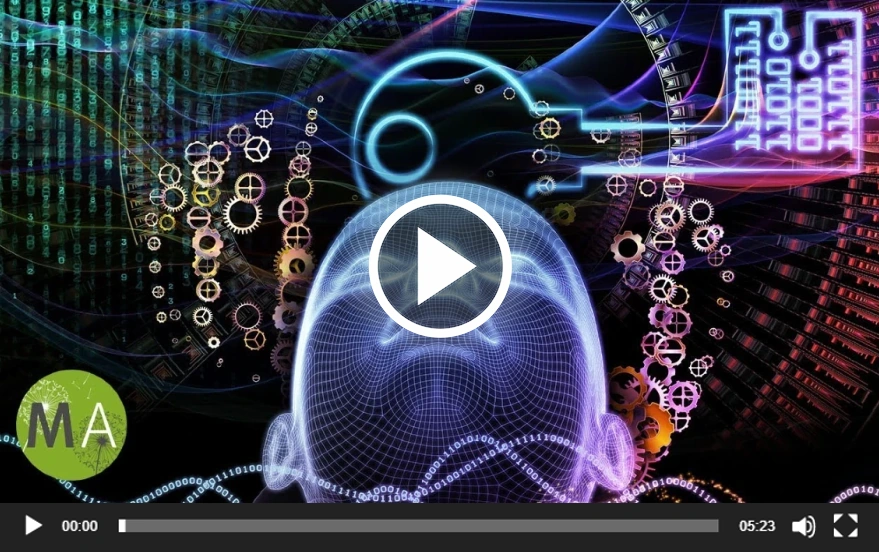
Stand fast, comrades of the digital age! As we plant our feet on the precipice of an imposing reality, we find ourselves staring into the unfathomable depths of a digital cosmos. Our society, with an unstoppable momentum, is hurtling headlong towards a future that promises to be more pixel than person, more code than consciousness.
Close your eyes and visualize, if you will, the world that lies tantalizingly within our grasp, an age where we work, play, love and even satiate our epicurean desires, not in the realm of the physical, but in the heart of a pulsating digital universe. The breathtaking pace of technological progress in the elusive realm of Artificial Intelligence (AI) pushes us ever closer to this brave new world, silently preparing us for a future where the border between reality and simulation blurs into oblivion.
But wait! The gravity of our situation requires that we pause for a moment. We’re not just exchanging our tangible, human interactions for digital ones. What we’re witnessing here, unfolding in real time, is an unthinkable reality – the wholesale replacement of the human essence itself.
Consider the panorama of human vocations that forms the backbone of our society. The doctor, dispensing not just medication but hope; the teacher, kindling the flame of knowledge; the coach, pushing us beyond our self-imposed limitations; the psychologist, guiding us through the labyrinth of the human mind – each one facing the prospect of being replaced by an unfeeling, algorithm-driven machine.
Are we poised on the edge of the precipice, or have we already stepped off into the abyss?
Do we still retain the capacity to differentiate between a genuine human conversation and a synthetic digital interaction?
Allow me to take you on a journey through time, back to a period of rigorous research that spanned over a decade and a half. The subject? The complex and dynamic interactions between therapists and their patients – a treasure trove of verbal and non-verbal communication that can only be described as conversations in their most authentic form.
What I found was nothing short of spectacular. These were not mere exchanges of words but a ballet of nuanced subtleties, delicate and sublime in equal measure. Here’s a fascinating nugget: when engaged in conversation, if one speaker ceases to speak, the other instinctively jumps in to fill the silence, typically in less than 0.2 seconds. Compare that with the average human reaction time in traffic, which is a whole second, five times longer. Bodies resonate with each other in real-time interactions, a harmonious symphony that mirrors the complex dynamics of a superorganism operating on psychic and subtle physical levels.
These intricate and dynamic human interactions weave a psychic membrane, an invisible conduit that silently transmits the most delicate emotions between individuals. This bond, this ethereal connection, allows for a spontaneous and profound empathy to manifest, a deep sense of understanding that is the very essence of our humanity. But there’s a caveat. This empathetic connection can only flourish if it’s not blunted by an overpowering ego structure, as seen in conditions like psychopathy.
Unfortunately, as we step further into the icy, artificial echo chambers of digital conversation, this empathetic resonance comes under siege. Technological impediments like signal delays, limited perspectives, and partial visuals severely impair the quality of interactions, often leaving us with an unshakeable sense of hollowness, a feeling of depletion that some have started referring to as digital depression. The AI’s promise as a panacea for this new-age malady remains lurking in the shadows, untested and uncertain.
As we traverse the annals of human history, we find that the industrialization, mechanization, and digitization of our daily existence have wrought havoc on our societal fabric, in ways more insidious than immediately apparent. They’ve atomized us, disconnecting us from our natural and social environments, and marooning us in the chilling abyss of loneliness.

The loneliness epidemic has reached alarming proportions. Early 21st-century studies reveal that up to 40% of the global populace reported feeling isolated, a staggering statistic that prompted former British Prime Minister, Theresa May, to take the unprecedented step of appointing a ‘Minister of Loneliness‘. In a similar vein, US Surgeon General, Vivek Murthy, released a ‘National Strategy to Advance Social Connection‘, acknowledging the dire necessity to combat this pervasive issue.
But my friends, you need not delve into the dreary world of statistics to truly grasp the severity of this problem. Just board a train during rush hour, where the tapping of fingers on screens has replaced the bustling hum of human conversation. Try greeting a stranger in the street, a simple act that was once seen as affirming our shared humanity, and you might be greeted with a suspicious glare and an unspoken question, “What does this fool want of me?“
This atomization, this chronic loneliness, is far from a mere societal issue. It has dire social ramifications, threatening to unravel the very fabric of our civilization. Isolated individuals, immersed in the narratives propagated by mass media and social media, often morph into a monolithic mass, blindly adhering to their given narratives, ready to relinquish all they hold dear, intolerant of any voice that dares to dissent.
These are not the masses of yesteryears, those physical throngs of humanity gathered in squares or marching in crusades. Today’s masses comprise isolated individuals, each cocooned in their digital silos, inundated with similar images and narratives by mass media, forming the bedrock of a disturbing symptom of our rationalistic society – the emergence of the totalitarian state.
As we navigate this unprecedented reality, we’re faced with a critical question that our future hinges upon.
How do we transform these lonely masses back into a society – a vibrant tapestry of individuals connected to each other, a collective where individuality does not perish but thrives in its unique singularity?
This question, my friends, forms the core of our shared digital destiny.
Brace yourselves, for our response will unequivocally shape the course of our future in the digital cosmos.



